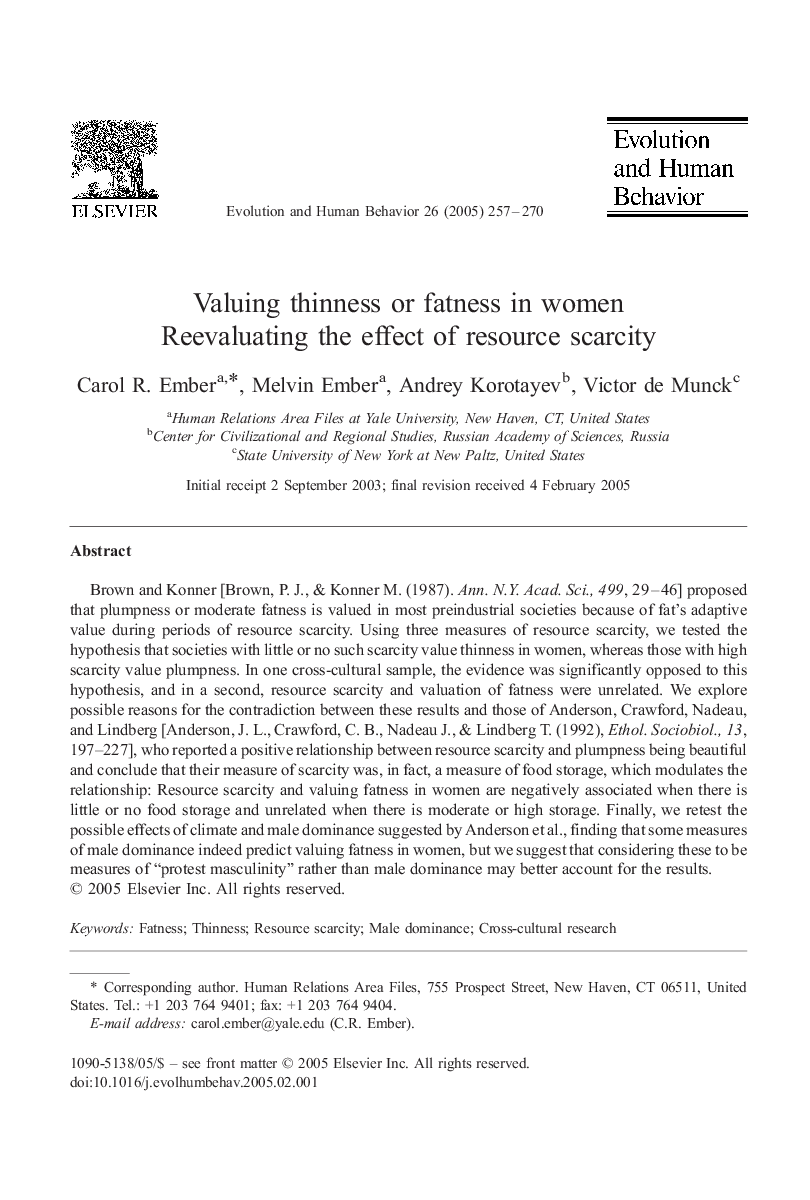| Article ID | Journal | Published Year | Pages | File Type |
|---|---|---|---|---|
| 10464197 | Evolution and Human Behavior | 2005 | 14 Pages |
Abstract
Brown and Konner [Brown, P. J., & Konner M. (1987). Ann. N.Y. Acad. Sci., 499, 29-46] proposed that plumpness or moderate fatness is valued in most preindustrial societies because of fat's adaptive value during periods of resource scarcity. Using three measures of resource scarcity, we tested the hypothesis that societies with little or no such scarcity value thinness in women, whereas those with high scarcity value plumpness. In one cross-cultural sample, the evidence was significantly opposed to this hypothesis, and in a second, resource scarcity and valuation of fatness were unrelated. We explore possible reasons for the contradiction between these results and those of Anderson, Crawford, Nadeau, and Lindberg [Anderson, J. L., Crawford, C. B., Nadeau J., & Lindberg T. (1992), Ethol. Sociobiol., 13, 197-227], who reported a positive relationship between resource scarcity and plumpness being beautiful and conclude that their measure of scarcity was, in fact, a measure of food storage, which modulates the relationship: Resource scarcity and valuing fatness in women are negatively associated when there is little or no food storage and unrelated when there is moderate or high storage. Finally, we retest the possible effects of climate and male dominance suggested by Anderson et al., finding that some measures of male dominance indeed predict valuing fatness in women, but we suggest that considering these to be measures of “protest masculinity” rather than male dominance may better account for the results.
Related Topics
Life Sciences
Agricultural and Biological Sciences
Ecology, Evolution, Behavior and Systematics
Authors
Carol R. Ember, Melvin Ember, Andrey Korotayev, Victor de Munck,
